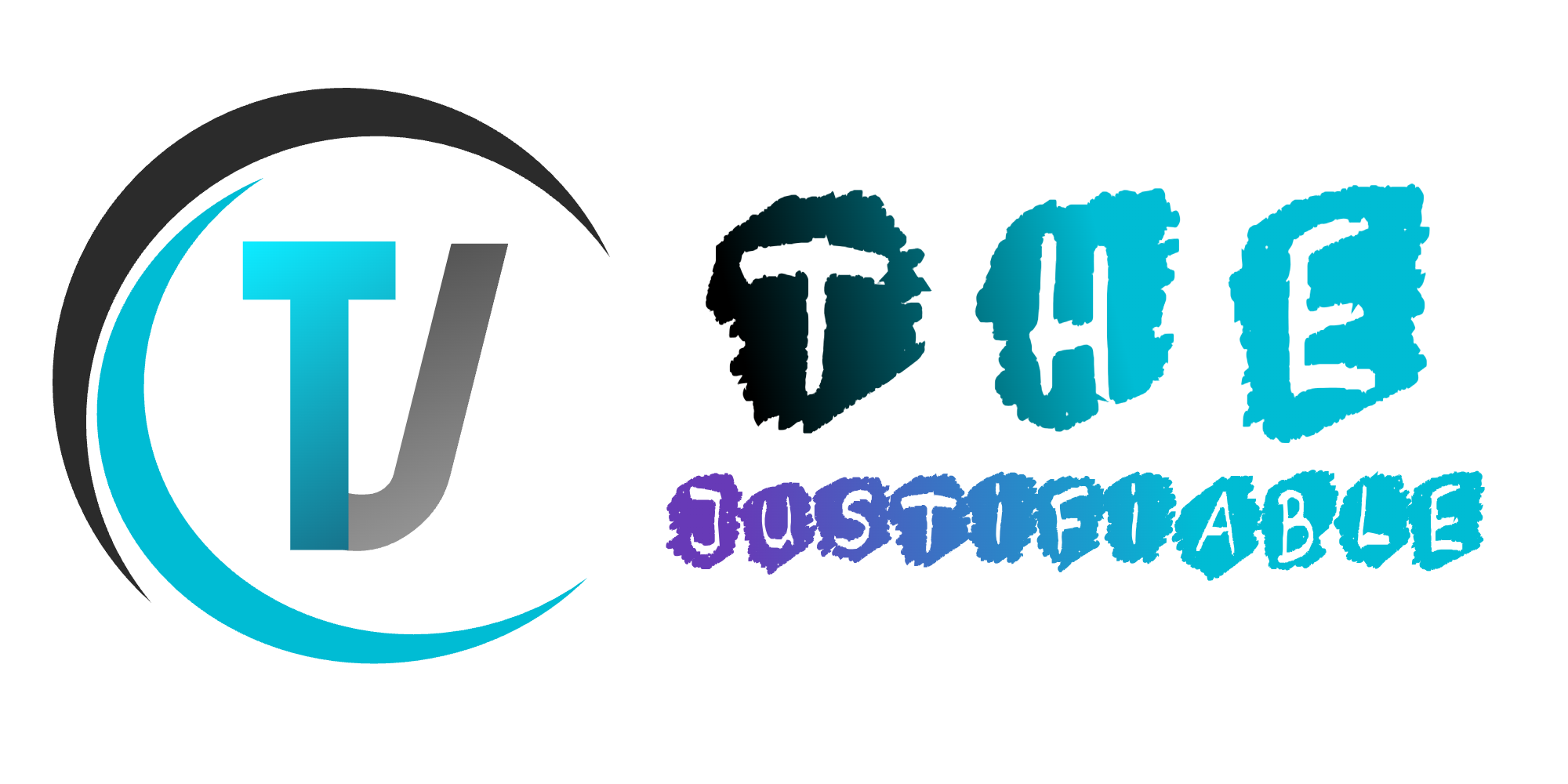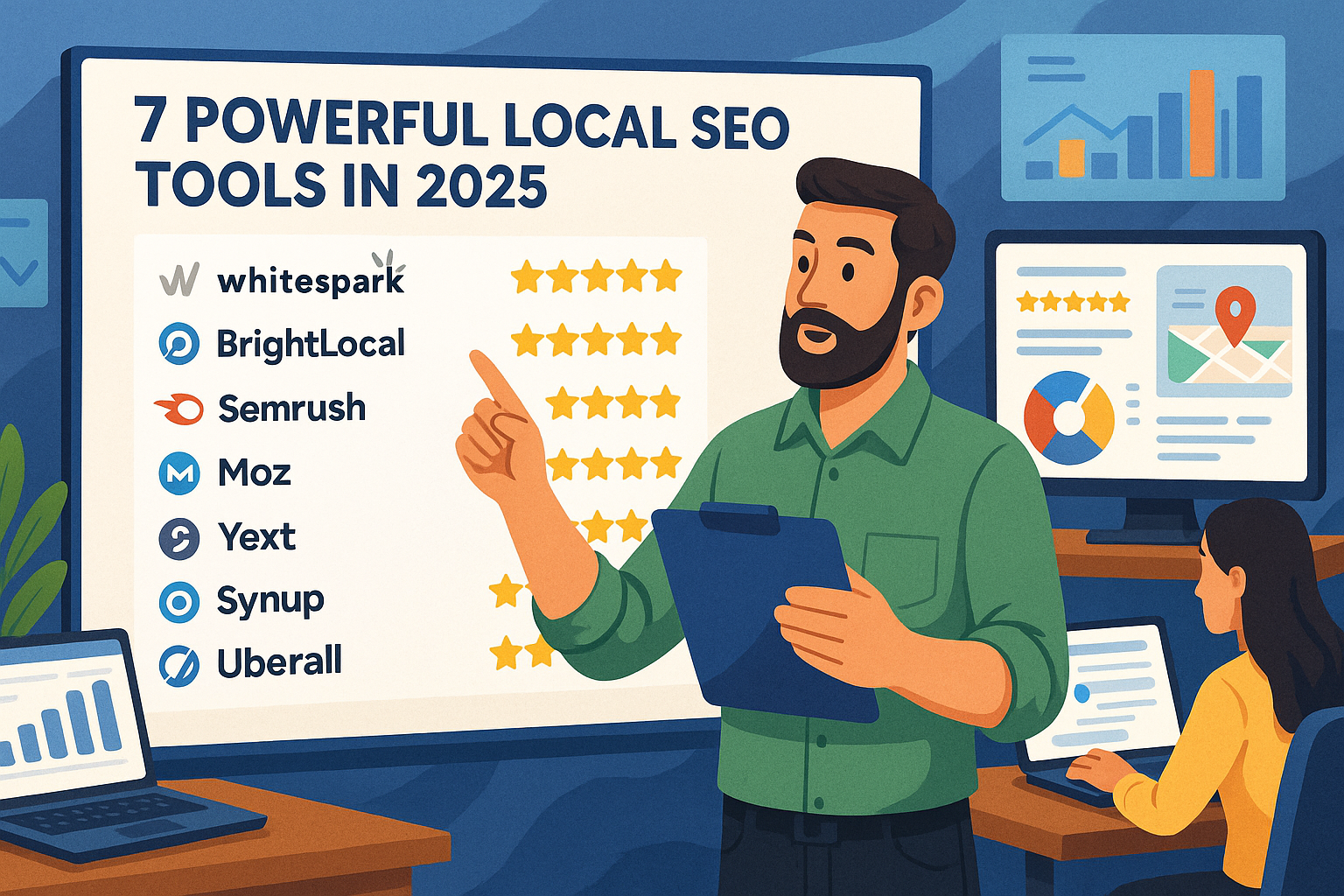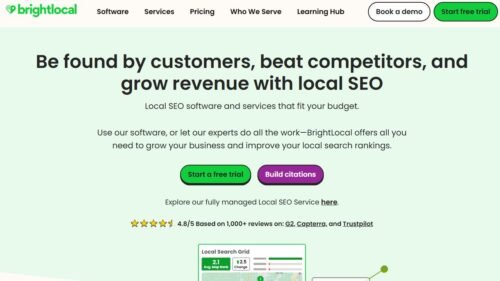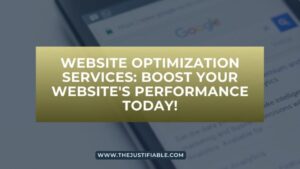Table of Contents
Whitespark has been a go-to tool for local SEO—especially for citation building and rank tracking—but it’s not the only game in town anymore. Whether you’re hitting budget limits, need more features, or just want a simpler interface, exploring other options can make a big difference.
Let’s walk through seven local SEO tools that are proving to be strong alternatives to Whitespark in 2025—each one tailored to different needs, budgets, and experience levels.
1. BrightLocal: All-in-One Local Marketing Platform
BrightLocal is one of the most talked-about Whitespark alternatives, and for good reason. It offers a complete suite of local SEO tools—making it ideal for agencies and freelancers alike.
Why BrightLocal Works So Well for Local SEO
BrightLocal covers everything from citation tracking to review management, giving you a bird’s-eye view of how your local business appears online.
Here’s how it stands out:
- Citation Building Services: Similar to Whitespark but often with quicker turnaround and deeper customization.
- Local Rank Tracker: Tracks rankings by zip code, city, or even neighborhood—perfect for businesses with multiple locations.
- Reputation Management: Gathers and displays reviews from Google, Yelp, and Facebook in one place.
- Audit Tools: Offers SEO, citation, and Google Business Profile audits for ongoing optimization.
In my experience, BrightLocal’s dashboard feels more intuitive than Whitespark’s. It’s also great if you want to present white-labeled reports to clients.
Best For: Agencies and consultants managing several local businesses.
2. Moz Local: Reliable and Easy to Use
Moz Local is a strong Whitespark alternative if you’re after simplicity without sacrificing power. It syncs your business data across a wide range of directories with minimal manual input.
What Makes Moz Local a Safe Bet
This tool automates the tedious parts of local SEO—especially citation consistency.
Key benefits include:
- Automatic Listing Sync: Pushes updates across platforms like Google, Facebook, Yelp, and Apple Maps.
- Duplicate Suppression: Identifies and removes duplicate listings that confuse search engines.
- Google Business Profile Integration: Lets you manage posts, Q&A, and business info without switching tabs.
- Local Profile Suggestions: Offers insights to improve visibility in real-time.
It’s not as feature-packed as Whitespark or BrightLocal when it comes to granular rank tracking, but the automation features save a ton of time.
Best For: Small business owners and local brands who want a set-it-and-forget-it approach.
3. Semrush Listing Management: Built for Scale
If you’re already using Semrush for broader SEO and PPC, their Listing Management add-on is a natural Whitespark alternative. It’s powered by Yext, which means you’re getting enterprise-grade directory syncing.
Where Semrush Excels in Local Listings
Semrush helps streamline your local presence across 70+ directories in just a few clicks.
Features worth noting:
- Real-Time Updates: Any change in your business info reflects instantly across directories.
- Location Heatmap: Shows where you’re performing well and where you’re not.
- Local Position Tracking: Combines geo-targeted ranking data with competitor comparisons.
- Built-In Review Monitoring: Collects and analyzes reviews so you can stay on top of customer feedback.
The best part? It connects with your broader SEO and PPC strategy, which means less siloed data and more holistic insights.
Best For: Larger businesses or SEO professionals already using Semrush’s toolkit.
4. Yext: Enterprise-Grade Local SEO and Knowledge Management
Yext goes beyond local SEO—acting as a centralized platform for managing brand knowledge across the web. If you’re running a multi-location brand or need total control of your digital footprint, it’s a robust Whitespark alternative.
Why Yext Is More Than Just a Listing Tool
This platform is ideal when local search is only one piece of a much larger marketing puzzle.
Here’s what makes it different:
- PowerListings: Ensures business info is accurate and synced across over 200 platforms.
- Knowledge Graph Integration: Builds structured data that feeds directly into search engines.
- Voice Search Optimization: Prepares your data to appear in voice search queries.
- Advanced Analytics: Ties in with Google and Bing to provide real-time search metrics.
While Yext can get pricey, its automation and enterprise-level integrations are hard to match.
Best For: Franchises, chains, or marketing teams managing 50+ locations.
5. LocalFalcon: Precision Rank Tracking by Location Pins
If you’re looking for hyper-local ranking insights, LocalFalcon is a laser-focused Whitespark alternative. It shows you exactly how your business ranks across a map grid—pin by pin.
How LocalFalcon Brings Clarity to Local Search
Traditional rank trackers give a general idea of your visibility, but LocalFalcon shows how rankings vary even a few blocks apart.
Why this matters:
- Visual Grid Tracking: Displays a heatmap of rankings based on actual GPS coordinates.
- Google Business Profile Sync: Pulls in data directly from GBP listings for accuracy.
- Competitor Comparison: Shows how you stack up against others in the same grid.
- Scheduled Scans: Set up recurring scans for consistent insights over time.
It’s incredibly helpful for service businesses like plumbers or landscapers who rely on neighborhood-specific visibility.
Best For: Local businesses in competitive, hyper-local markets.
6. Uberall: Omnichannel Presence Management
Uberall focuses on maintaining your business’s presence across all online channels—including social, maps, directories, and even voice assistants. It’s an ideal Whitespark alternative for those who want complete brand consistency across touchpoints.
Uberall’s Approach to Local and Beyond
Where Whitespark focuses heavily on citations and local rankings, Uberall leans into customer experience and brand control.
Top features include:
- Listings and Locator Pages: Build and sync local pages that rank well and convert better.
- Customer Feedback Integration: Combines review management with actionable insights.
- Social Media Support: Manages local pages on Facebook and other platforms directly.
- Store Locator Widgets: Helps businesses drive more in-person visits from their site traffic.
Uberall stands out for combining local SEO with customer engagement, offering tools to turn browsers into buyers.
Best For: Retail chains and multi-location businesses looking for a unified customer journey.
7. Synup: Customizable Local SEO and Branding Tool
Synup offers a clean, flexible Whitespark alternative with a strong emphasis on branding. It gives you tools to manage listings, reviews, and even content—all from one platform.
What Makes Synup a Unique Player
If you’re managing a growing local brand and want control over your visuals, messaging, and listings, Synup can help streamline everything.
Here’s what it delivers:
- Listings Management: Syncs data across 50+ platforms and lets you edit with ease.
- Review and Reputation Tools: Tracks feedback and sends automated alerts.
- Branding Controls: Lets you update logos, bios, and taglines across platforms in one go.
- Performance Reports: Offers metrics on visibility, traffic, and conversion impact.
Unlike more analytics-heavy tools, Synup feels a bit more “brand-friendly”—great for small businesses that care deeply about consistency.
Best For: Brand-conscious small businesses and creative agencies.
What to Consider When Choosing a Whitespark Alternative
There’s no one-size-fits-all solution when it comes to local SEO tools. Depending on your business goals, team size, and budget, your ideal tool may vary.
Here are a few things to keep in mind:
- Do you manage multiple locations? Tools like Yext, BrightLocal, and Uberall scale well.
- Need simple automation? Moz Local or Semrush may be better suited.
- Want visual rank insights? LocalFalcon offers unmatched map-based data.
- Working with clients? Look for white-label options and audit reporting features.
If you’re just starting out, I suggest testing a few platforms with free trials. Each one has a slightly different feel and focus, so take the time to find one that truly aligns with your workflow.
Expert Tip: Test Before You Commit
Most of these tools offer either a free trial, a demo, or a no-risk month-to-month plan. Try two or three at once and run a few local audits or rank scans. It won’t just show you what the tool can do—it’ll show you how you like working with it.
And don’t just compare features—ask:
- Is this helping me save time?
- Are the reports easy to read?
- Is support responsive?
The best Whitespark alternative is the one that fits your workflow, not just your wishlist.
What to Do Before Switching to a Whitespark Alternative
Before you dive into a new local SEO platform, it’s smart to get your digital house in order. Switching tools without a clear game plan can leave you with duplicate listings, missing data, or worse—rank drops.
This short checklist will help you make a smooth, stress-free transition.
Audit Your Existing Local SEO Setup
Take stock of everything that’s already out there. You might be surprised by how many outdated listings or inconsistent details exist across the web.
Here’s what to look for:
- Your business name, address, and phone number (NAP)—are they identical everywhere?
- Are there old locations still showing up on Google or Yelp?
- Are you actively managing your Google Business Profile or has it been ignored?
If you’ve used Whitespark before, download any citation reports or ranking data for historical comparison later.
Decide What You Actually Need Moving Forward
Not every tool offers the same feature set—and not every feature is useful for your goals. Avoid overpaying for extras you don’t need.
Ask yourself:
- “Do I need more automation or more customization?”
- “Am I prioritizing reviews, rankings, or citations?”
- “How much time do I actually want to spend inside the platform each week?”
If you’re managing a team, factor in how easy the tool is to train others on.
Map Out a 90-Day Strategy With the New Tool
Once you choose your Whitespark alternative, use the first 90 days to test it properly and measure impact.
Here’s how to make those months count:
- Set a baseline: Track current rankings, reviews, and listing accuracy.
- Schedule recurring tasks like citation audits or review monitoring.
- Set clear KPIs—this could be an increase in GBP views, review volume, or ranking movement.
Take screenshots and export reports monthly to track progress and make smart adjustments.
Watch for Data Conflicts During the Transition
If you’re switching from Whitespark’s citation services to another platform that syncs listings, be careful. Sometimes the new tool may overwrite older submissions or cause temporary mismatches.
Tips to stay clean:
- Turn off automatic syncing on one platform before activating another.
- Monitor major directories like Google, Bing, and Yelp closely for the first few weeks.
- Use tools like Moz Check or BrightLocal’s Audit Tool to scan for conflicts.
Keeping a close eye early on avoids messy cleanups later.
Pro Tip: Treat the Switch Like a Mini Rebrand
Even if your business isn’t changing, this is the perfect opportunity to update branding elements across the web—logos, bios, hours, photos, and even featured services.
You can boost trust and conversion just by presenting a more cohesive presence across directories.
If you’ve ever thought, “I should fix that Yelp photo,” now’s your moment.
Customizable Local SEO Checklist for Switching from Whitespark
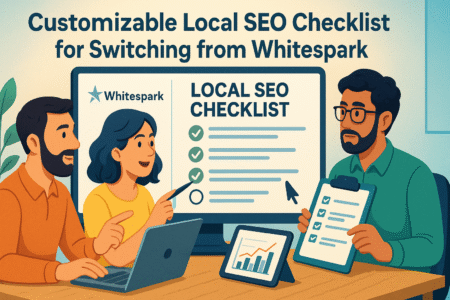
Phase 1: Prep and Audit
Goal: Get a clear snapshot of your current setup before moving to a new tool.
- Download all reports from Whitespark (rankings, citation lists, audit results)
- Audit current NAP (Name, Address, Phone) across key directories
- Verify Google Business Profile access and current details
- List all locations if multi-location business
- Check for any duplicate listings in Google, Bing, Facebook, Yelp, etc.
- Review your existing citations: which are active, outdated, or broken?
Phase 2: Define Goals and Pick the Right Tool
Goal: Choose a Whitespark alternative that aligns with your strategy.
- Define your top 3 priorities (e.g., rank tracking, reviews, automation)
- Compare at least 2 tools with free trials or demos
- Test dashboard usability—can your team or clients understand it?
- Check for white-label reporting if working with clients
- Confirm pricing matches your monthly or yearly budget
Phase 3: Set Up the New Tool
Goal: Start fresh and clean—avoid data overlap or conflicting settings.
- Pause or cancel citation syncing in Whitespark (if active)
- Set up your business profiles in the new platform
- Add or import all locations (if applicable)
- Set up automatic syncing and audit tools
- Add team members or assign permissions
- Customize branding and notification settings
Phase 4: Optimize Listings and Branding
Goal: Improve visibility and consistency across every platform.
- Update logos, business bios, taglines, and service areas
- Add or update high-quality business photos
- Confirm correct business categories in all directories
- Ensure hours, holidays, and contact info match across platforms
- Add a few FAQs or posts to your Google Business Profile
Phase 5: Track, Measure, and Adjust (First 90 Days)
Goal: Monitor changes and optimize based on results.
- Set ranking, review, or listing KPIs
- Export and review performance reports monthly
- Track keyword or ranking changes by location (if using tools like LocalFalcon)
- Review and respond to online reviews weekly
- Log wins: more traffic, better rankings, increased call volume, etc.
Bonus: Collaboration + Communication Checklist
If you’re part of a team or managing clients:
- Share the audit findings with stakeholders
- Provide tool onboarding or training guides
- Set reporting frequency and format expectations
- Assign review responses or listing edits to team members
- Schedule monthly check-ins to revisit strategy

